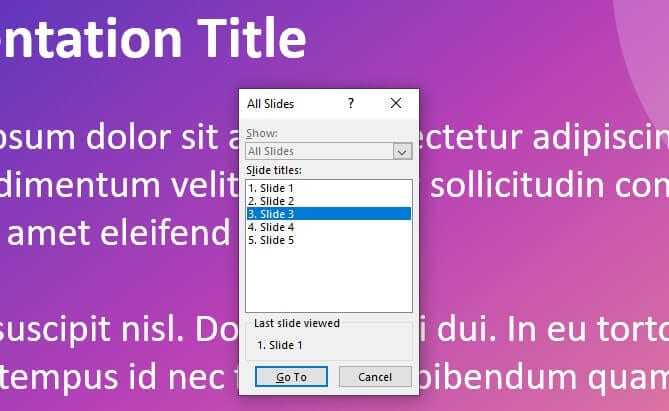Microsoft PowerPoint is one of the most popular presentation software used by students, teachers, business professionals and many others to create visually appealing slides to convey information. This beginner’s guide will take you from opening PowerPoint for the first time to mastering some of the more advanced features step-by-step.
Whether you need to create presentations for school, work, or just for fun, this guide has got you covered. By the end, you’ll be able to create professional presentations with animations, transitions, charts, images, video and more!
Step 1: Getting Started with PowerPoint
To begin using PowerPoint on your Windows PC, simply search for “PowerPoint” on the Windows search bar or start menu. Click to open the PowerPoint app.
On Mac, launch PowerPoint from the Applications folder.
The start screen displays a blank presentation with a single slide titled “Title Slide”. This slide has predefined layouts for a title and subtitle.
To exit PowerPoint, click the Close button (X) in the top right.
Step 2: Creating New Presentations
To make a new presentation:
- Go to the “File” menu
- Click “New”. This opens a dialog box with multiple templates to choose from.
- Select “Blank Presentation” to start with a blank canvas.
PowerPoint allows you to create presentations from scratch or customise pre-designed templates for business, education, and other categories.
While creating presentations, save your work frequently. Go to File > Save to save presentations on your local storage.
Step 3: Adding, Deleting and Reordering Slides
Presentations comprise of individual slides to showcase information. To add a new blank slide:
- Click the “New Slide” button under the left menu bar
Or
- Right click on a slide > Select “New Slide”
To delete slides:
- Select the slide you want to delete in the left menu
- Right click > Delete Slide
Use the same process to cut, copy and paste slides within the same presentation or between presentations.
To reorder slides, click and drag slides under the left menu bar to arrange them sequentially.
Step 4: Adding and Formatting Text
To add text boxes in slides:
- On the “Insert” menu, click the “Text Box” option
- Draw a text box on the slide area to insert text
You can also click inside an existing layout placeholder to directly add text.
To edit and format text:
- Select text and use the options under “Home” menu to change fonts, sizes, color and styles.
- Use keyboard shortcuts like Ctrl+B for bold, Ctrl+I for italics and Ctrl+U for underline.
- Align text left, right or centered. Increase/decrease indents.
- Make bullet point lists or numbered lists.
Use headings, quotes and hyperlinks to enhance text.
Step 5: Inserting Images, Shapes and Icons
Visuals make presentations more interesting and easier to comprehend. To insert:
Images
- Click “Pictures” under Insert menu
- Select an image file from your computer
- Drag corners to resize, drag image to move position
Shapes and Icons
- Click “Shapes” or “Icons” under the Insert menu
- Choose a shape/icon to insert
- Customize fill color, outline, effects and more
Set a consistent style for all visual elements to make presentations look professionally designed.
Step 6: Using Slide Transitions
Transition effects add motion when you go from one slide to the next during presentations. To add transitions:
- Select the slide you want to add transition to
- Under “Transitions” menu, choose an effect like Fade, Push, Wipe etc.
- You can set transition duration and advancement (manual/automatic)
Use consistent transition effects throughout the presentation. Too many flashy transitions can be distracting.
Step 7: Animating Text and Objects
Animations make individual text/objects enter, exit or move within slides at different times:
- Select the text/object you want to animate
- Under “Animations” menu choose an entrance, emphasis or exit effect
- Customize animation sequence, start/delay times and playback settings
Use subtle animations to guide the audience through key points on each slide. Don’t overdo it.
Step 8: Working with Charts and Tables
Charts and tables simplify complex data for the audience:
Charts
- Click to insert a new chart from the “Insert” menu
- Select chart type (column, bar, pie etc) and data range
- PowerPoint will automatically create the chart
- Customize colors, labels, axes and more under “Chart Design” and “Format”
Tables
- Under the “Insert” menu, select a rows x column table
- Populate table cells with text/numbers
- Use Table Design and Layout options to customize
Integrate charts and tables for a data-driven presentation.
Step 9: Adding Multimedia – Videos, Audio and GIFs
Multimedia engages your audience better than static slides:
- Online videos – Copy and paste YouTube, Vimeo or other video links onto slides. These will embed as playable videos when presenting.
- Audio – Add background music or voice overs with the “Audio” option. Customize playback and fading.
- GIFs – Search for relevant GIFs using online libraries and embed these animated images.
Ensure multimedia files play accurately before your actual presentation.
Step 10: Final Review and Presentation
Before presenting, finalize your slides:
- Spell check – Use manual Proofing under Review menu or automatic spell check.
- Slide order – Review sequence and flow.
- Consistency – Standardize fonts, colors, animations and themes.
- Practice – Rehearse the presentation with slide timings to gauge flow. Refine where needed.
Presenting
- Use Presenter View to view notes and upcoming slides
- Use pointer tools to highlight key points
- Engage the audience with eye contact and effective communication





